Install WordPress on Ubuntu 24.04 with Nginx, MariaDB, PHP8.3 (LEMP)
This tutorial is going to show you how to install WordPress on Ubuntu 24.04 with Nginx, MariaDB, and PHP 8.3 (LEMP Stack). WordPress is the most popular CMS (Content Management System) in the world. It is estimated that more than a third of websites today are powered by WordPress. PHP 8.3 is made into the Ubuntu 24.04 repository and the latest version of WordPress runs perfectly with it.
Prerequisites
1. To follow this tutorial, you need an Ubuntu 24.04 OS running on a remote server. If you are looking for a virtual private server (VPS), I recommend Kamatera VPS, which features:
- 30 days free trial.
- Starts at $4/month (1GB RAM)
- High-performance KVM-based VPS
- 9 data centers around the world, including the United States, Canada, UK, Germany, The Netherlands, Hong Kong, and Isreal.
Follow the tutorial linked below to create your Linux VPS server at Kamatera.
2. You also need a domain name, so visitors can type a domain name in the web browser address bar to access your website. I registered my domain name at NameCheap because the price is low and they give whois privacy protection free for life.
3. This tutorial assumes that you have already set up a LEMP stack on Ubuntu 24.04. If not, please check out the following tutorial.
After finishing LEMP installation, come back here and read on.
Step 1: Download WordPress
SSH into your Ubuntu 24.04 server and update existing software.
sudo apt update && sudo apt upgrade -y
Next, go to wordpress.org download page and download the zip archive. You can acquire the direct download link by right-clicking the download button and select copy link.
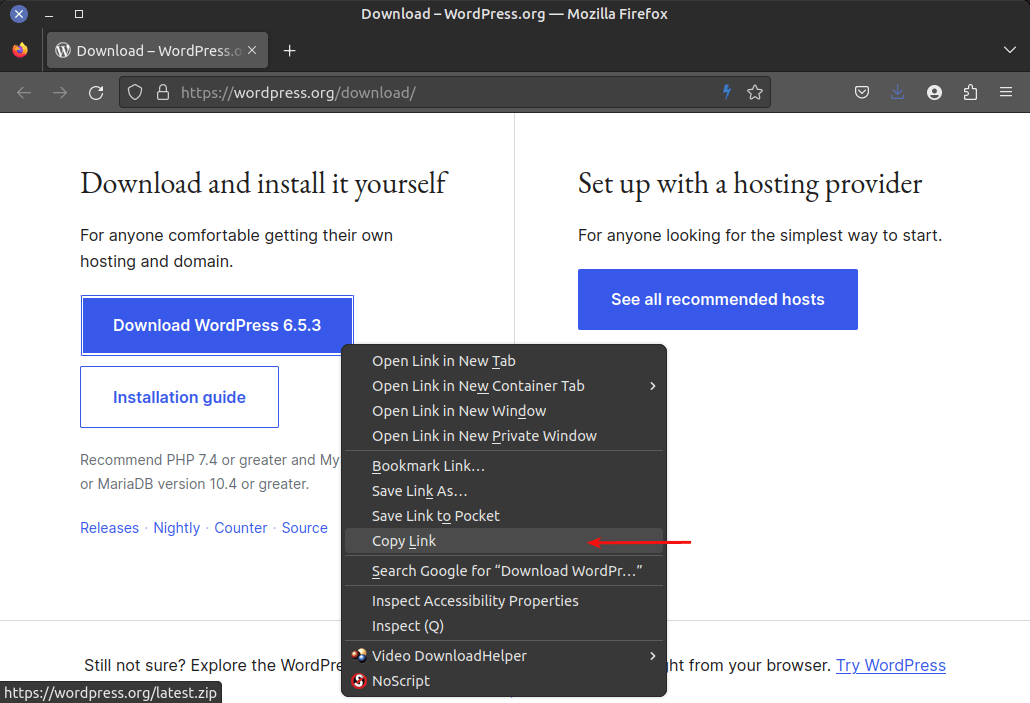
Then at the command line prompt, type in wget followed by the direct download link to download WordPress to your Ubuntu 24.04 server.
wget https://wordpress.org/latest.zip
Next, extract the zip archive using the command below.
sudo apt install unzip sudo mkdir -p /usr/share/nginx sudo unzip latest.zip -d /usr/share/nginx/
The archive will be extracted to /usr/share/nginx/ directory. A new directory named wordpress will be created (/usr/share/nginx/wordpress). Now we can rename it like below, so it’s easy for us to identify each directory. Replace example.com with your real domain name.
sudo mv /usr/share/nginx/wordpress /usr/share/nginx/example.com
Step 2: Create a Database and User for WordPress Site
Log into MariaDB console as root with the following command.
sudo mariadb -u root
or
sudo mysql -u root
Once you are logged in, create a database for WordPress using the following command. I named it wordpress, but you can use whatever name you like such as your site name. (Don’t leave out the semicolon.)
create database wordpress;
Then enter the command below to create a database user for WordPress. Replace wpuser and your-password with your preferred username and password.
create user wpuser@localhost identified by 'your-password';
Grants all privileges of WordPress database to the user.
grant all privileges on wordpress.* to wpuser@localhost;
Flush the privileges table for the changes to take effect and then get out of MariaDB console.
flush privileges; exit;
Step 3: Configure WordPress
Go to your WordPress directory.
cd /usr/share/nginx/example.com/
Copy the sample configuration file and rename it to wp-config.php.
sudo cp wp-config-sample.php wp-config.php
Now edit the new config file with a command-line text editor like Nano.
sudo nano wp-config.php
Find the following lines and replace the red texts with the database name, username and password you created in the previous step.
/** The name of the database for WordPress */
define('DB_NAME', 'database_name_here');
/** MySQL database username */
define('DB_USER', 'username_here');
/** MySQL database password */
define('DB_PASSWORD', 'password_here');
Then scroll down to find the following line.
$table_prefix = 'wp_';
By default, every WordPress database table name begins with wp_ as the prefix. It’s highly recommended to change it to something else to improve security. Use random characters like below.
$table_prefix = '9OzB3g_';
Save and close the file. To save the file in Nano text editor, press Ctrl+O, then press Enter to confirm. Next, press Ctrl+X to exit.
Because this file contains a password, we run the following command to make sure only the file owner can read this file.
sudo chmod 640 wp-config.php
We also need to set the Nginx user (www-data) as the owner of the WordPress site directory by using the following command.
sudo chown www-data:www-data /usr/share/nginx/example.com/ -R
Step 4: Create an Nginx Server Block for WordPress
We will create the server block file in /etc/nginx/conf.d/ directory. The file name must end with .conf.
sudo nano /etc/nginx/conf.d/example.com.conf
Put the following texts into the file. Replace the red texts with your own domain name. Don’t forget to create A records for your domain name in your DNS manager.
server {
listen 80;
listen [::]:80;
server_name www.example.com example.com;
root /usr/share/nginx/example.com/;
index index.php index.html index.htm index.nginx-debian.html;
error_log /var/log/nginx/wordpress.error;
access_log /var/log/nginx/wordpress.access;
location / {
try_files $uri $uri/ /index.php;
}
location ~ ^/wp-json/ {
rewrite ^/wp-json/(.*?)$ /?rest_route=/$1 last;
}
location ~* /wp-sitemap.*\.xml {
try_files $uri $uri/ /index.php$is_args$args;
}
error_page 404 /404.html;
error_page 500 502 503 504 /50x.html;
client_max_body_size 20M;
location = /50x.html {
root /usr/share/nginx/html;
}
location ~ \.php$ {
fastcgi_pass unix:/run/php/php8.3-fpm.sock;
fastcgi_param SCRIPT_FILENAME $document_root$fastcgi_script_name;
include fastcgi_params;
include snippets/fastcgi-php.conf;
fastcgi_buffers 1024 4k;
fastcgi_buffer_size 128k;
}
#enable gzip compression
gzip on;
gzip_vary on;
gzip_min_length 1000;
gzip_comp_level 5;
gzip_types application/json text/css application/x-javascript application/javascript image/svg+xml;
gzip_proxied any;
# A long browser cache lifetime can speed up repeat visits to your page
location ~* \.(jpg|jpeg|gif|png|webp|svg|woff|woff2|ttf|css|js|ico|xml)$ {
access_log off;
log_not_found off;
expires 360d;
}
# disable access to hidden files
location ~ /\.ht {
access_log off;
log_not_found off;
deny all;
}
}
Save and close the file. Then test Nginx configurations.
sudo nginx -t
If the test is successful, reload Nginx.
sudo systemctl reload nginx
Enter your domain name in the browser address bar.
example.com
or
example.com/wp-admin/install.php
You shall see the WordPress installation wizard. Select a language.
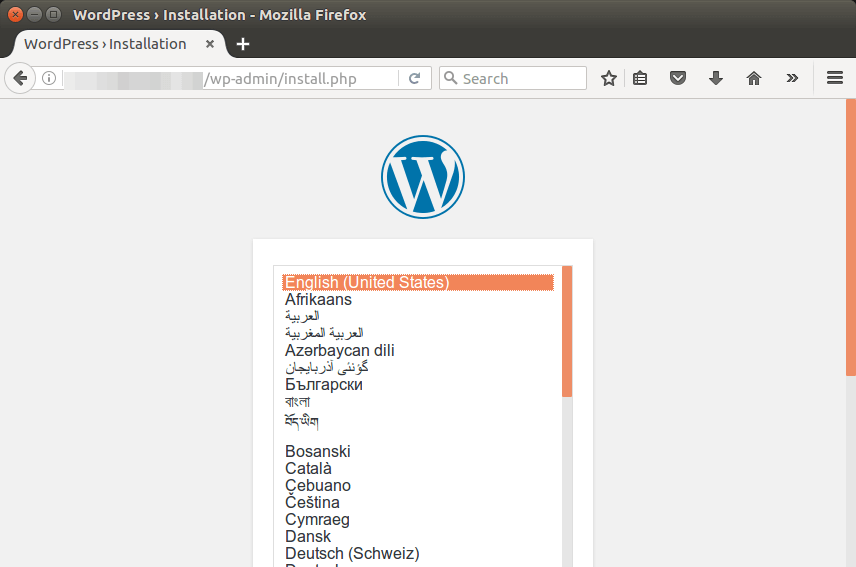
If the installation wizard isn’t displayed, you probably need to install some PHP extensions.
sudo apt install php-imagick php8.3-fpm php8.3-mbstring php8.3-bcmath php8.3-xml php8.3-mysql php8.3-common php8.3-gd php8.3-cli php8.3-curl php8.3-zip
Then reload PHP-FPM and Nginx. The wizard should now be displayed.
sudo systemctl reload php8.3-fpm nginx
Before entering your sensitive information in the setup wizard, it’s recommended to enable HTTPS to prevent traffic hijacking.
Step 5: Enabling HTTPS
To encrypt the HTTP traffic, we can enable HTTPS by installing a free TLS certificate issued from Let’s Encrypt. Run the following command to install Let’s Encrypt client (certbot) on Ubuntu 24.04 server.
sudo apt install certbot python3-certbot-nginx
And run this command to obtain and install TLS certificate.
sudo certbot --nginx --agree-tos --redirect --hsts --staple-ocsp --email [email protected] -d yourdomain.com,www.yourdomain.com
Wher
--nginx: Use the Nginx plugin.--agree-tos: Agree to terms of service.--redirect: Force HTTPS by 301 redirect.--hsts: Add the Strict-Transport-Security header to every HTTP response. Forcing the browser to always use TLS for the domain. Defends against SSL/TLS Stripping.--staple-ocsp: Enables OCSP Stapling. A valid OCSP response is stapled to the certificate that the server offers during TLS.--email: Email used for registration and recovery contact.-dflag is followed by a list of domain names, separated by comma. You can add up to 100 domain names.
The certificate should now be obtained and automatically installed.
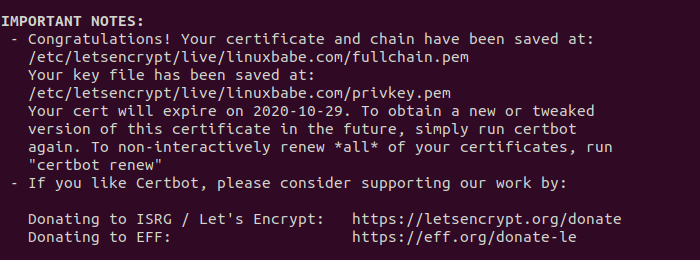
Now if you reload the WordPress setup wizard, you can see that HTTP is automatically redirected to HTTPS connection.
Step 6: Finish the Installation with the Setup Wizard
Create an admin account and click the Install WordPress button.
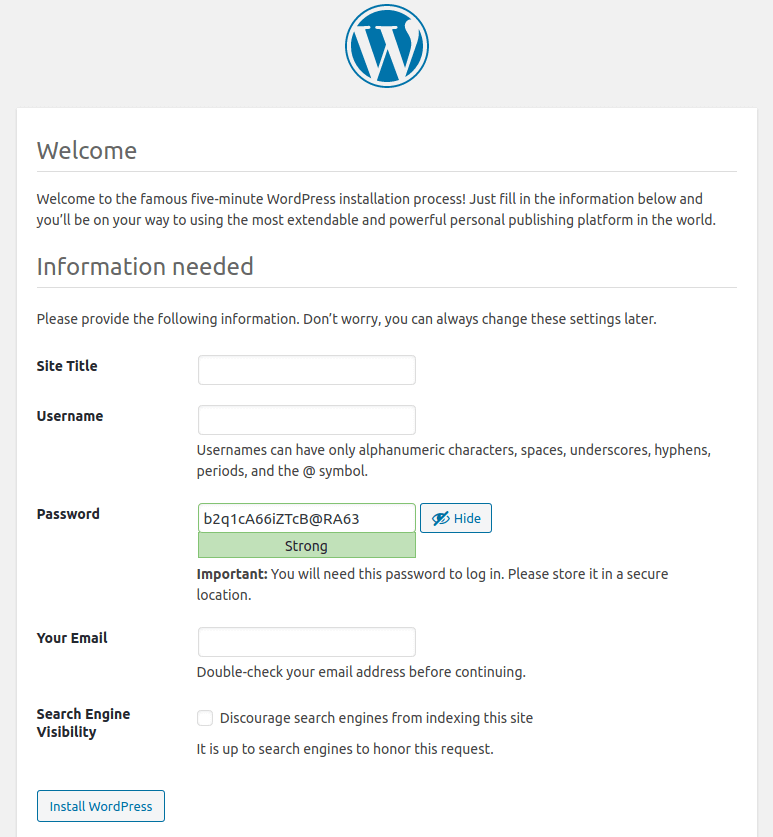
And now your new WordPress site is installed.
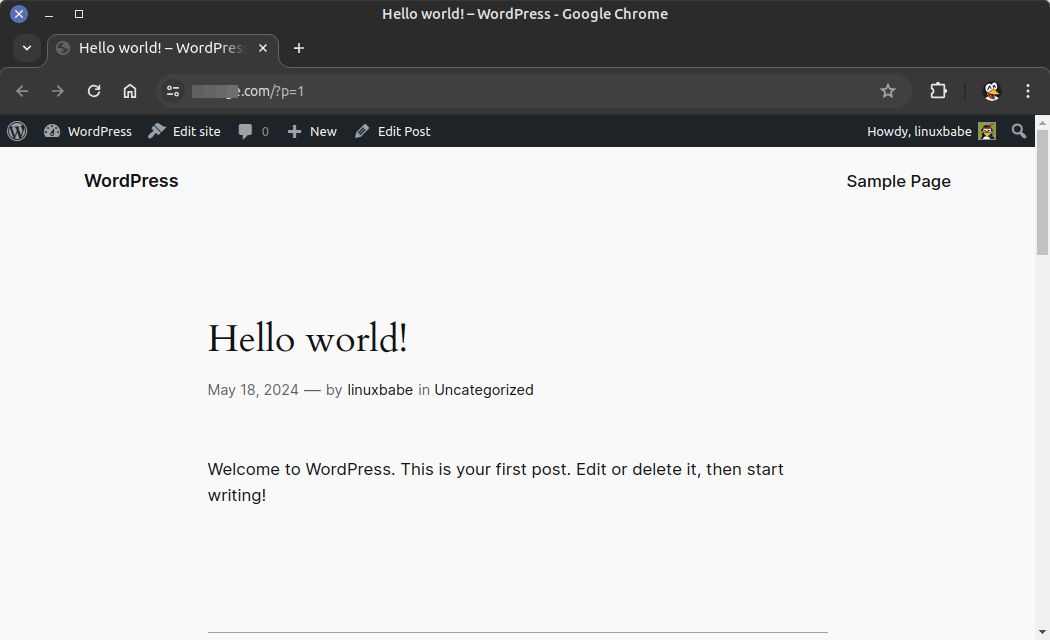
How to Redirect www to non-www (Or Vice Versa)
We have already enabled redirecting HTTP to HTTPS, what’s left to do is redirect www to non-www, or vice versa. It’s very easy. Simply go to WordPress Dashboard > Settings > General and set your preferred version (www or non-www) in WordPress Address and Site Address. Be sure to include the https:// prefix.
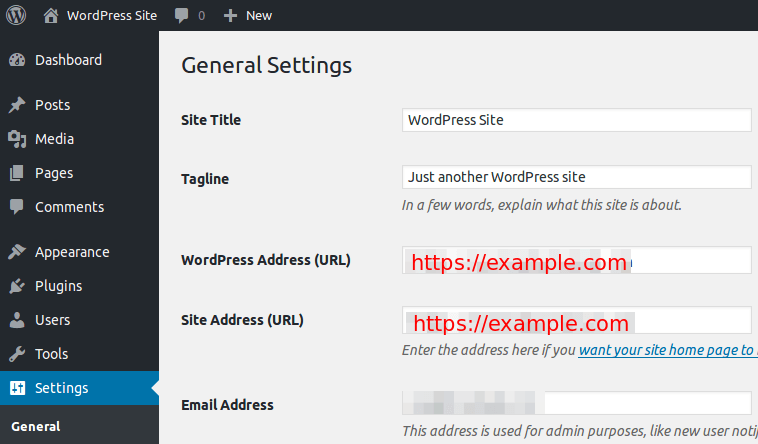
How to Send Emails in WordPress
Your WordPress site needs to send emails like account registration emails, password-resetting emails, comment notification emails, etc. Instead of using expensive third-party solutions like Gsuite to create professional email addresses for your website, you can follow this iRedMail tutorial to set up your own mail server with your own domain name, so you can have unlimited mailboxes and send unlimited emails without breaking the bank.
Note that it’s a good practice to install the mail server and WordPress on two different virtual private servers because you don’t want the mail server to slow down your WordPress site speed, and the mail server will leak the IP address of your WordPress site if they are on the same virtual private server, which means hackers can bypass any CDN (Content Delivery Network) you are using and launch DDoS attack directly at your origin server.
Once your mail server is up and running, you can install an SMTP plugin in WordPress, so it can connect to your mail server and send emails. Go to your WordPress dashboard -> Plugins, click Add New to install a new plugin.
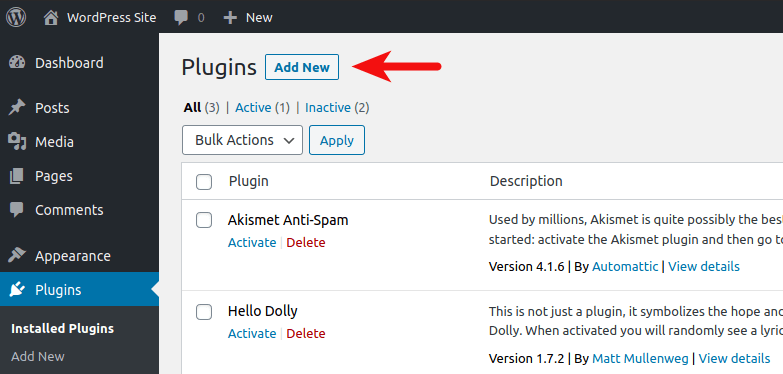
Then type in WP Mail SMTP in the search box. Install and activate the WP Mail SMTP by WPForms plugin.
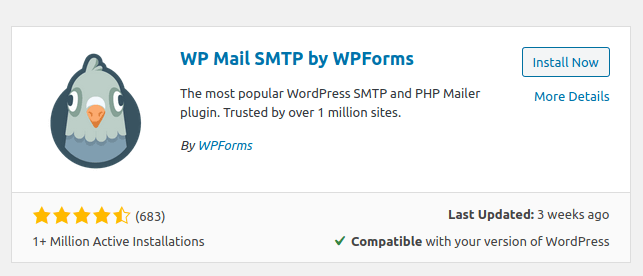
Reload the WordPress dashboard web page, you will see WP Mail SMTP on the left menu bar. Click on it and select Settings.
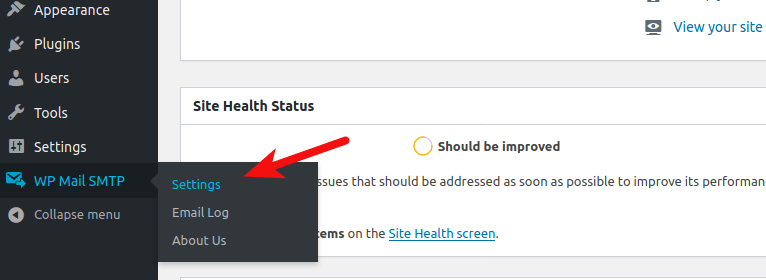
Then scroll down to the Mailer section. By default, the PHP mailer is selected. We need to change it to Other SMTP.

Scroll down and you will need to enter the SMTP settings.
- Enter the hostname of your mail server.
- Select TLS as Encryption.
- Use port 587.
- Enable Authentication.
- Enter an email address of your domain and the password.
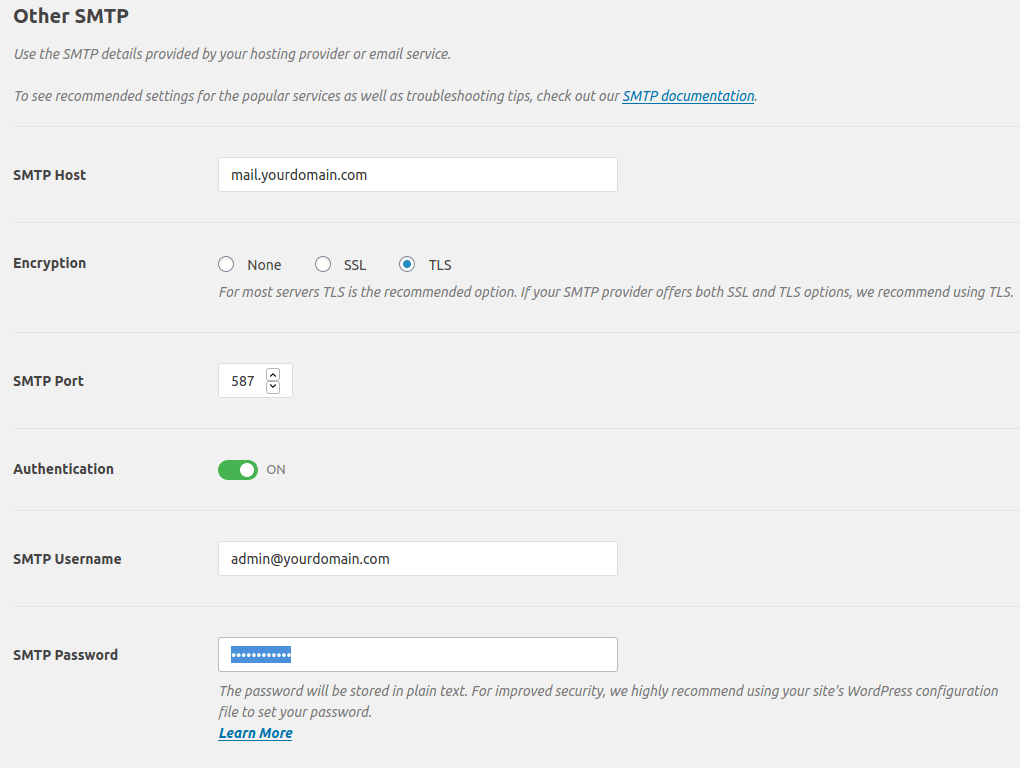
After saving the settings, you can test email sending by logging out the WordPress dashboard, and click lost your password link to send a password-resetting email.
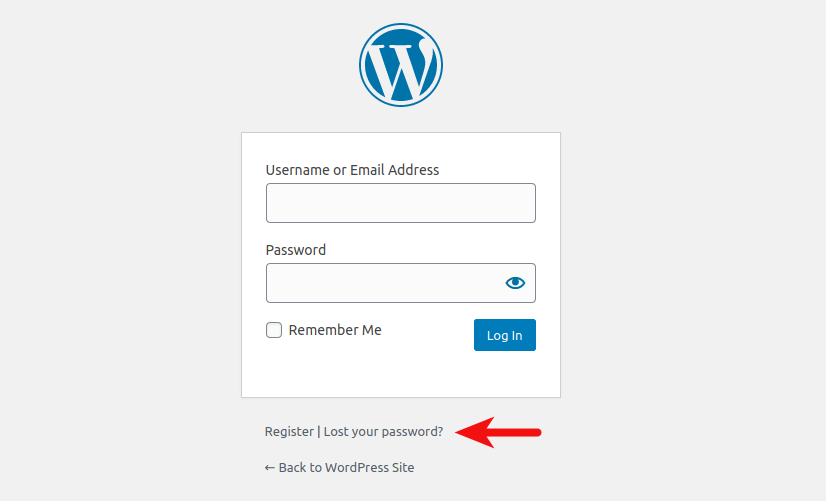
Increase Upload File Size Limit
By default, files such as images, PDF files uploaded to the WordPress media library can not be larger than 2MB. To increase the upload size limit, edit the PHP configuration file.
sudo nano /etc/php/8.3/fpm/php.ini
Find the following line (line 850). In the Nano text editor, you can press Ctrl+/, then enter 850, to jump to line 850.
upload_max_filesize = 2M
Change the value like below:
upload_max_filesize = 20M
Then find the following line (line 694).
post_max_size = 8M
Change the maximum size of POST data that PHP will accept.
post_max_size = 20M
Save and close the file. Alternatively, you can run the following two commands to change the value without manually opening the file.
sudo sed -i 's/upload_max_filesize = 2M/upload_max_filesize = 20M/g' /etc/php/8.3/fpm/php.ini sudo sed -i 's/post_max_size = 8M/post_max_size = 20M/g' /etc/php/8.3/fpm/php.ini
Then restart PHP-FPM.
sudo systemctl restart php8.3-fpm
Nginx also sets a limit of upload file size. The default maximum upload file size limit set by Nginx is 1MB. To allow uploading large files to your WordPress site, edit the Nginx configuration file.
sudo nano /etc/nginx/conf.d/example.com.conf
We have already set the maximum file size in this file, as indicated by
client_max_body_size 2M;
You can change it if you prefer, like 20M.
client_max_body_size 20M;
Save and close the file. Then reload Nginx for the changes to take effect.
sudo systemctl reload nginx
Next Steps
I hope this tutorial helped you install WordPress on Ubuntu 24.04 with Nginx, MariaDB and PHP 8.3 (LEMP stack). As always, if you found this post useful, then subscribe to our free newsletter to get more tips and tricks.
Backup is important in case of hacking, data center disasters, etc. You should have a backup strategy for your WordPress site.
- Back Up and Restore MariaDB Databases From the Command line
- Use Duplicati to Back Up Files on Debian, Ubuntu, Linux Mint
Linux Server Performance Tuning and Monitoring
- Easily Boost Ubuntu Network Performance by Enabling TCP BBR
- What is HTTP/2 and How to Enable it on Nginx
- Linux Server Performance Monitoring with Netdata (2022)
WordPress Command Line Utility
- You may also want to use the WP-CLI command-line tool to manage your WordPress site.
- You can use WPScan to scan the vulnerabilities of your WordPress site.
Take care 🙂



When I try to run the install wizard I get a 404 not found error. Any ideas what I did wrong?
Nevermind… I figured it out. I followed the LEMP tutorial first but did not delete the default.conf file in conf.d, lol.
finally, I found a working manual, everything works according to your instructions Thank you very much you’re the best
The most beautiful and descriptive article I have seen on this subject.
It was very beautiful and successful, thank you.
Please add how to install it with PHP 8.4
I just did that. Literally just change out 8.3 for 8.4 in every command or file and it works.
Hi,
I am not sure where I did wrong…my site give 404 error but when I open the link wp-login.php and login, the site is there and I can see the main page but any other pages.
I tried by updating the permalinks, but it doesn’t work.
How to fix this?
I followed this tutorial and wanted to say thanks for putting this altogether. It was very easy to follow and helped me out. I wanted to add an issue I ran across as it may help other people. After I got WordPress installed the Post New function was broken. I would keep getting this error message: “The editor has encountered an unexpected error.” I spent a while going through each line of the nginx configuration block but didn’t understand the issue. After some googling I found this: https://github.com/WordPress/gutenberg/issues/9912.
What I did to fix this was changing:
location / { try_files $uri $uri/ /index.php; }to
location / { try_files $uri $uri/ /index.php$is_args$args; }I hope that this can help others and save them some time if they run across the issue.
I remember using
might cause problems when you want to change the WordPress permalinks.
I don’t use the Gutenburg editor. I Installed a plugin to enable the classic editor in WordPress.
I do use this one and does not break permalinks.
Hope that helps.
@adam, I would like to thank you for the fix you posted. I had the exact same issue using elementor as an editor. Even Divi wasnt allowing me to edit pages when I changed my permalinks to post only. My editors would only work if I had my permalinks on plain. After editing my nginx config with what you suggested my editor is working after changing my permalinks. You are a legend. And thanks guys for the detailed guides, I have found them super helpful!! Very helpful and detailed!!!!
Hi,
i follow all instruction, i got “413 Request Entity Too Large” i upload 35mb theme file